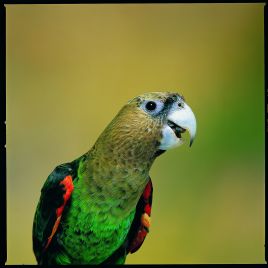Genetic analysis of the Cape parrot, currently considered a Poicephalus robustus sub-species, shows that it is genetically distinct from other P. robustus subspecies and should be elevated to the species level. The researchers believe this may allow for better planning and implementation of conservation strategies for the Cape Parrot. The researchers genotyped 138 specimens from […]
Tag: birds
The importance of singing well
The reproductive success of male song sparrows, one of the most abundant native sparrows of North America, depends on their song repertoire, not the quality of their territory, according to new research. The researchers found that males with a larger repertoire produced and fledged more offspring annually. The study also found that these males moved […]
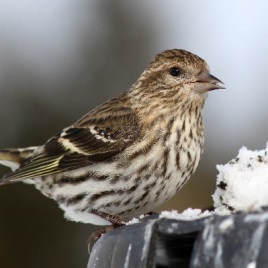
Using the climate to predict the movement of birds
Future irregular large-scale movements, technically known as irruptions, of boreal seed-eating birds in North America may be predictable using previous climate conditions according to a 24 year study of the Pine Siskin finches travel patterns. Researchers have found that the birds’ irruptions typically occur in either a north-south or west-east pattern which can be linked […]
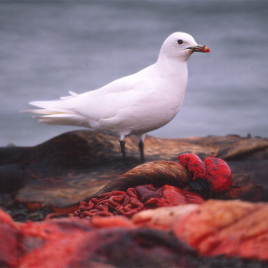
Mercury in endangered Ivory Gull feathers reach a 130-year record high
Ivory Gulls have declined by more than 80 per cent in Canada since the 1980s and have been listed as an endangered species in Canada since 2006. These gulls have the highest concentrations of mercury in their eggs of any Arctic bird, but the reason for their decline is not well understood. Researchers measured mercury […]
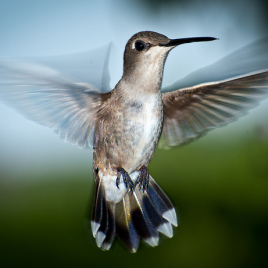
Hummingbirds could improve drones’ stability
Albatrosses, airplanes, and helicopters all share long narrow wings which provide good aerodynamic efficiency. In contrast the wings of hummingbirds are short and stubby. Conventional aerodynamic theory predicts this should makes them inefficient. In a new study, researchers resolved some of the contradiction by finding that while slender wings are indeed most efficient at a […]
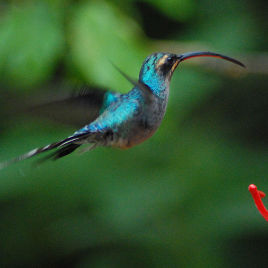
Pollinator-recognition in plants
Researchers have shown that a plant can discriminate among its pollinators. The plant, Heliconia tortuosa, produced 5.7 times as much pollen when it was visited by particular species of hummingbirds than other species or insects. The researchers suggest this ability enables the plant to maximize its reproductive strategy as the favoured hummingbirds travel greater distances, […]
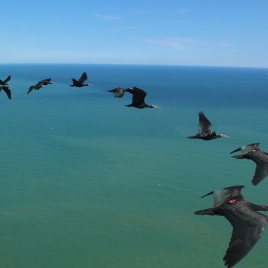
Formation flying ibises play it fair
Who will fly in front? When migrating, northern bald ibises fly in a ‘v’ formation and take turns with the toughest position at the front of the ‘v’, so they all have a chance to relax and enjoy riding the slipstream, a new study shows. The evidence gathered is the first to show cooperative reciprocal behaviour […]
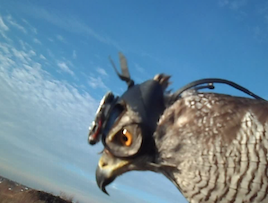
Turn abruptly if you are hunted by a goshawk
Goshawks hunt by fixing their eyes on their prey. Their method is so effective that the hawks pursuit of their target can be over in seconds. Using cameras mounted on the heads of the birds, researchers analysed the raptors’ pursuit strategy from a birds-eye perspective. They found that Goshawks used different strategies at different stages […]
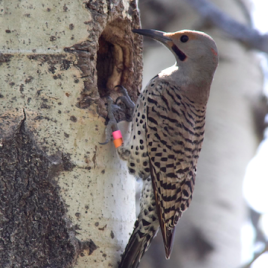
Unique woodpecker species where male travels more during winter migration
Female northern flickers, a woodpecker species who breeds during summer all across Canada, spends its winter farther north on average than males, according to a new study. Sex differences in migration distances are well known, but this is the first time researchers observed female birds that travel less distance than males. The authors believe this […]
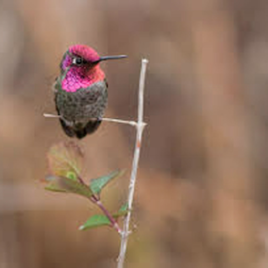
Birds watch where they’re going
Flying birds rely on movements in the surrounding environment to control their position in space, a new study has found. The authors filmed hummingbirds hovering in front of a projection screen and examined the birds’ response to moving bars and spiral patterns compared to static images. The researchers found flying birds are sensitive to movements […]
Chickadees can resist cold down to -10°C
Black-capped chickadees’ ability to resist cold temperatures by increasing their own heat output maxes out at about -10 degrees Celsius, according to a new study. After that point, they seek shelter from the cold rather than remain outside dealing with it. The study is the first to suggest that birds have a limit on their […]
Key bird habitats under siege
Over 350 of the world’s Important Bird and Biodiversity Areas (IBAs) are under threat, according to a new report. In 2012 protection was suspended in the Bay of Panama wetlands, one of the most important sites for migratory waterbirds in the Americas. Closer to home, British Columbia’s Boundary Bay – Roberts Bank – Sturgeon Bank […]
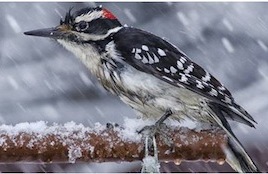
Project FeederWatch
This citizen science project is a joint program of Bird Studies Canada and the Cornell Lab of Ornithology. For a $35 fee, participants receive a handbook and other materials that help them identify bird species. They enter this data into a central website, thereby helping scientists track changes in bird numbers and movements across North […]
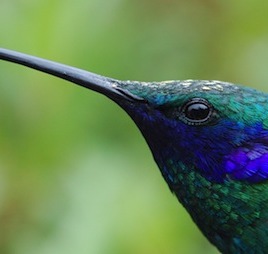
David vs. Goliath: How small birds compete
One might think that larger birds invariably win fights with smaller ones, but a new study explains why that is not always the case. Researchers studied vultures at carcasses, hummingbirds at nectar sources, as well as antbirds and woodcreepers at army ant swarms to discover that some small birds have evolved ways to beat their opponents. […]
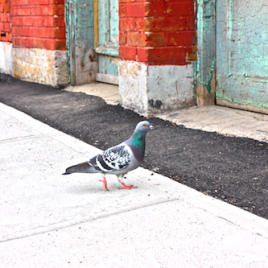
Humans and pigeons gamble in similar ways
A new study shows that when it comes to gambling and taking risks, humans and pigeons have more in common than you might think. The study had pigeons and humans choose between different coloured options to receive a reward. Through experience they learned that some colours gave guaranteed rewards, while others gave risky (probabilistic) rewards, i.e. […]
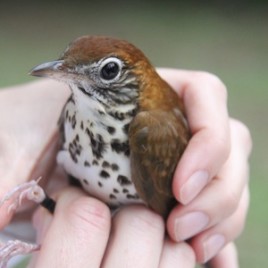
First flight: why young birds migrate more slowly
A slower migration from overwintering grounds in Belize and Costa Rica to breeding grounds in Canada may help young wood thrushes avoid competition with adults, a new study shows. Using data from geolocators – a kind of bird backpack that records location information – researchers showed that juvenile birds leave almost 2 weeks behind the […]
